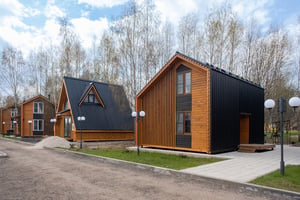
PART THREE: Creating a thriving tiny home community starts with smart, purpose-driven funding. Whether your goal is to reduce homelessness, support disaster recovery, or expand workforce housing, careful financial planning turns ideas into action.
Following our discussions on zoning and planning in parts one and two, this final installment in our three-part series on tiny home development examines the funding landscape – how communities can identify resources, align with housing goals, and take the next step toward implementation.
Start with Purpose, Then Match the Funding
Tiny home communities can offer cities a more affordable path to addressing housing needs. Compared to traditional single-family or multifamily developments, tiny homes cost significantly less to construct per unit due to their smaller size, simpler infrastructure, and shorter construction timelines. For cities seeking cost-effective, scalable housing options, tiny homes represent a fiscally responsible solution. The question isn't whether cities can afford to invest in tiny homes – but whether they can afford not to.
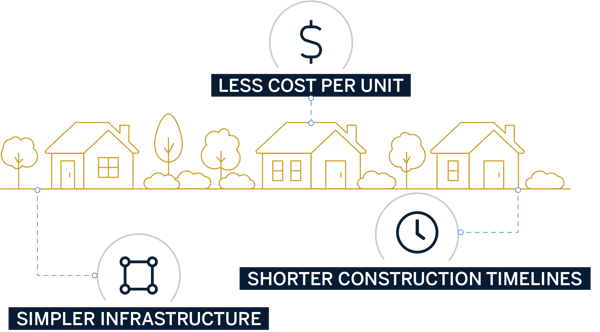
Defining your project’s purpose early on helps narrow your search to programs that are available and appropriate for your project. Start by asking:
- Who will this project serve?
- What community challenges are we solving?
- What are our long-term goals for the site or program?
Clearly outlining your intent helps narrow your search to programs that are available and appropriate for your project. The more specific your purpose, the easier it is to identify funding sources that are a strategic fit – not just a financial one.
For example:
- Affordable housing initiatives may qualify for HUD HOME funds, Low-Income Housing Tax Credits (LIHTC), or local housing trust funds designed to serve low- to moderate-income residents.
- Transitional housing for individuals experiencing homelessness can access Emergency Solutions Grants (ESG), Continuum of Care (CoC) funding, or local partnerships with service providers.
- Workforce housing near job centers may be eligible for state economic development grants or transportation-linked funding, especially when paired with access to transit.
- Disaster recovery and climate-resilient housing often qualify for FEMA mitigation grants, Community Development Block Grant–Disaster Recovery (CDBG-DR) funds, or state resilience initiatives.
Each of these programs has its own application process, deadlines, and reporting requirements – but aligning your goals to theirs from the start helps streamline access and improve your chances of approval.
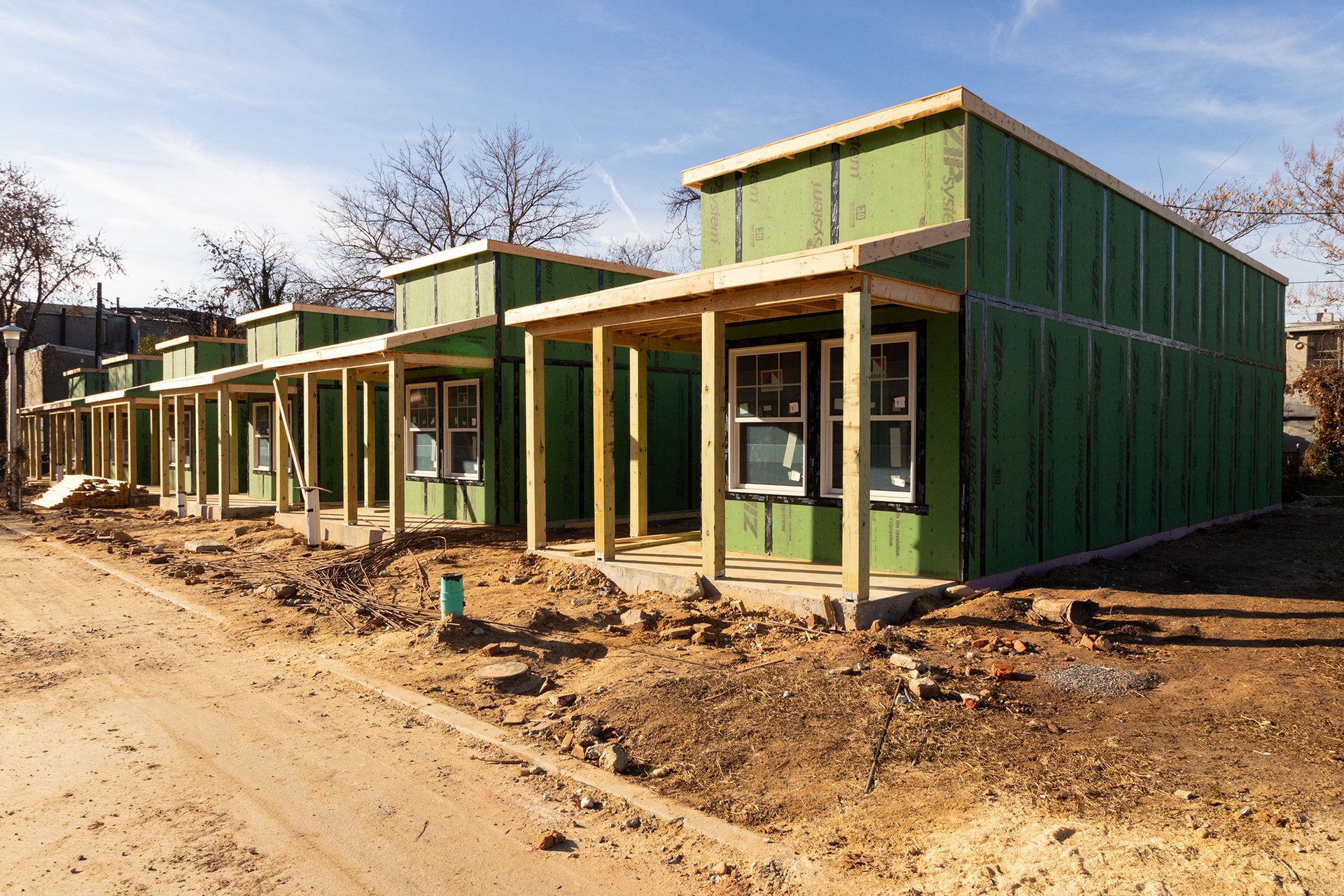
Combine Public, Private, and Philanthropic Sources
Most tiny home developments require a blended approach because no single fund typically covers everything – land, infrastructure, housing units, and services.
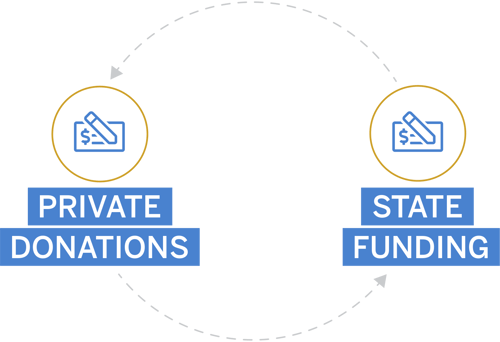
For example, the Veterans Community Project (VCP) in Milwaukee combined major private donations with foundation support and requested $4 million in state funding to prepare the site and infrastructure. This combination allowed them to meet multiple funding conditions while staying aligned with their mission.
Design Decisions Affect Funding Access
Project design isn’t just aesthetic; it’s strategic. From unit size to foundation type, nearly every design element has implications for eligibility, affordability, and long-term compliance. Planning with funding requirements in mind ensures the design supports your financing strategy rather than limits it.
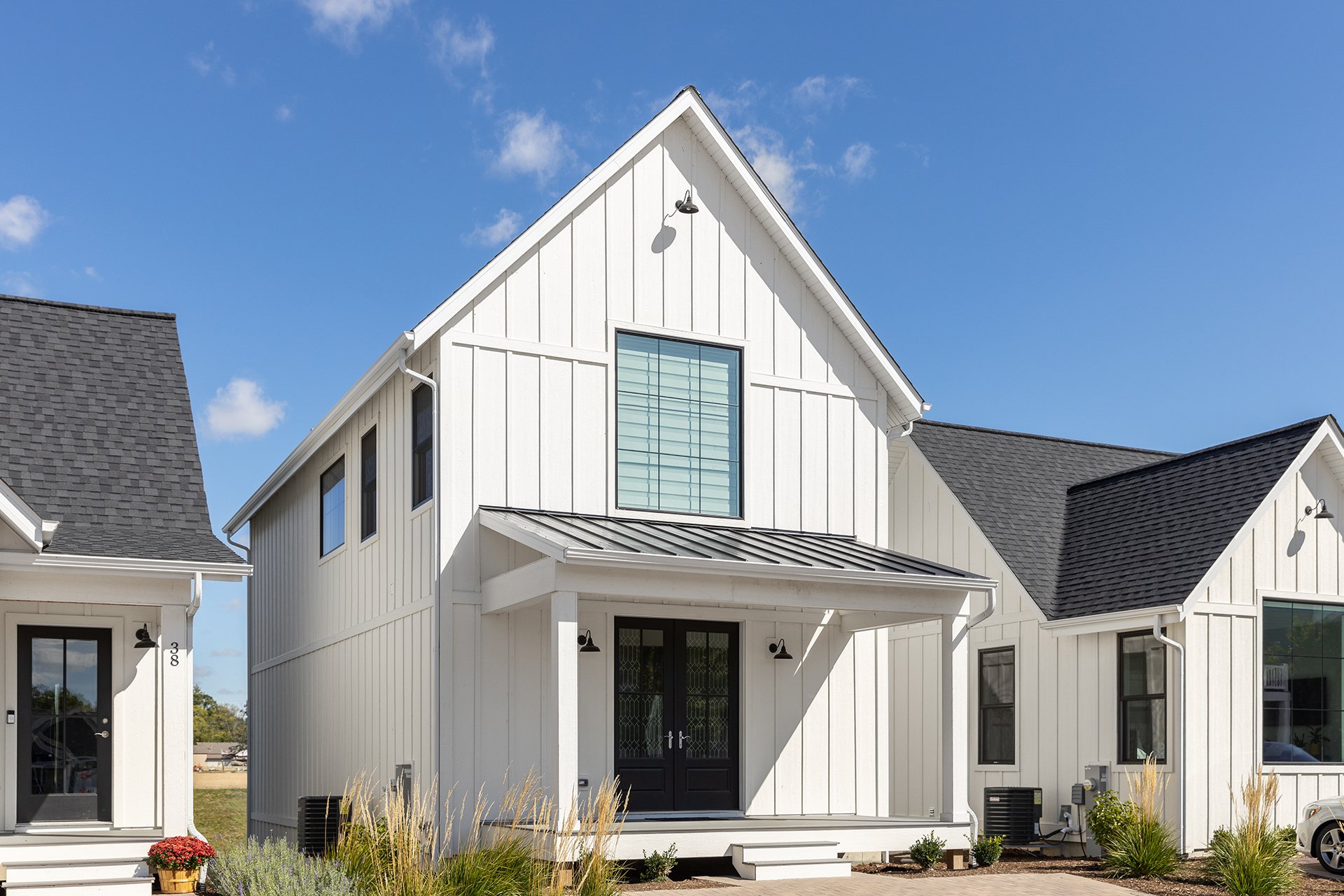
Most public funding sources include rules about who the homes serve and how they are built. Key eligibility factors include:
- Unit size and type: Some programs exclude homes that fall below minimum square footage or lack permanent foundations. Designing with these thresholds in mind keeps more funding options available.
- Tenant income targeting: Many programs require homes to serve residents earning below a specific percentage of Area Median Income (AMI). Designing efficient layouts or shared infrastructure can help meet these affordability goals.
- Affordability terms: Funding may require homes to remain affordable for 15 to 30 years. Durable, low-maintenance designs can better support long-term affordability.
- Local compliance: Zoning and building codes may not fully address tiny homes or other nontraditional housing. Including code-compliant features like accessible pathways, appropriate setbacks, and utility connections can help ensure approval and maintain funding eligibility.
For example, selecting permanent units may allow access to tax credits, while prioritizing extremely low-income tenants could unlock deeper federal subsidies. These decisions should be made with funding implications in mind, not after the fact.
By aligning design choices with funding requirements from the outset, developers can create housing that meets community needs while staying competitive for critical financial support.
Steps to Move from Planning to Implementation

Once your strategy is in place, these steps can help you move your project forward:
- Assemble a cross-sector team: Planners, engineers, housing partners, service providers, and community leaders all bring critical insight and capacity.
- Conduct a feasibility study: Evaluate site conditions, infrastructure needs, zoning, and cost estimates to make your case to funders.
- Stack the right funding mix: Use a combination of public, private, and philanthropic support to meet capital needs and fill in any gaps.
- Create a compelling proposal: Tailor each funding request to the program’s priorities and use data and design materials to show impact and readiness.
Ready to See Big Change from Tiny Homes in Your Community?
Ready to transform your community with cost-effective and sustainable housing solutions? Explore the potential of tiny home developments to save money, reduce environmental impact, and provide dignified living spaces for those in need. Join us in making a big change with tiny homes!

Brian Depies is a development and industry advisor and SEH associate, leveraging public and private sector experience to align municipal planning with redevelopment initiatives. Specializing in land use planning, entitlements, and approvals, he guides projects from concept to completion. His solutions-focused approach drives economic growth while balancing community needs. As a Wisconsin Builders Association Board Member, he supports affordable housing and advances project success through stakeholder collaboration and a clear understanding of client goals.

.png?width=113&name=SEH_Logo_RGB%20(1).png)
